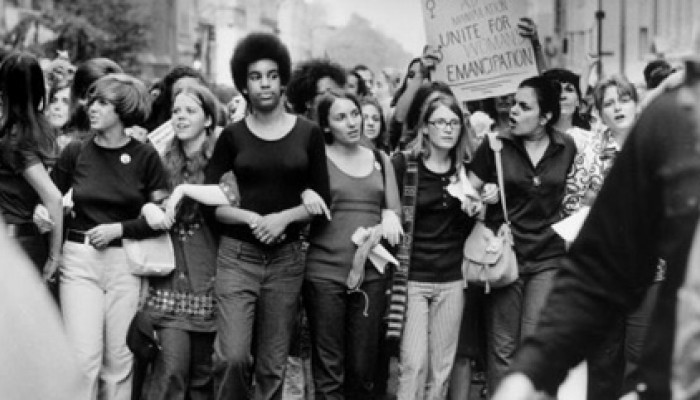The Equal Rights Amendment is making a comeback. Nearly a century has passed since the ERA was first introduced in Congress, and four decades have passed since its unsuccessful ratification campaign. But there is now revived interest in enshrining the principle of gender equality in our Constitution. Over the past two years, the state legislatures in Nevada and Illinois have ratified the ERA by comfortable margins, breathing new life into the proposed amendment. Advocates now believe that achieving the necessary 38 state ratifications is possible.
What is in store for the ERA? And how might it advance the fight for gender equality in the United States today? These questions are resurfacing across the country. And in a day-long event organized by the Brennan Center for Justice, an array of politicians, scholars, legal advocates, and activists will examine the implications of this modern movement for legal change.
The ERA was originally drafted by suffragette Alice Paul and first introduced in Congress in 1923, three years after the Nineteenth Amendment was ratified. Seeking to build on the political momentum that opened the ballot box to women, Paul and other activists launched an effort to secure women’s full and explicit right to equality under the law. The original proposal read:
Men and women shall have equal rights throughout the United States and every place subject to its jurisdiction. Congress shall have power to enforce this article by appropriate legislation.
Paul and other advocates spent decades lobbying for the Equal Rights Amendment. Each Congress introduced a resolution proposing the ERA, but to no avail.
The ERA’s political fortunes began to improve over time, particularly as the women’s movement gained strength. In 1969, Shirley Chisholm, the first African American woman elected to Congress and “no stranger to race prejudice,” called on her colleagues to adopt the ERA, explaining “that in the political world I have been far oftener discriminated against because I am a woman than because I am black.” The following year, Martha Griffiths, the amendment’s tireless sponsor, whipped enough votes in the House to get the ERA resolution out of committee through the seldom-used discharge petition. (Griffiths had also played a pivotal role in getting the Civil Rights Act of 1964 to ban sex discrimination.) Finally, in 1972, nearly half a century after it was first introduced, a slightly modified version of the ERA resolution was adopted by both chambers of Congress. It read:
Equality of rights under the law shall not be denied or abridged by the United States or any State on account of sex. The Congress shall have the power to enforce, by appropriate legislation, the provisions of this article.
The measure garnered immediate and overwhelming support from both Democrats and Republicans — well beyond the two-thirds required to propose a constitutional amendment — and even an endorsement from President Richard Nixon. Advocacy groups like the National Organization for Women lauded the proposed ERA as it was sent to the states for ratification in March 1972. It seemed like a sure bet: The ERA was almost certain to become the 27th Amendment. By the end of 1973, 30 state legislatures had moved quickly to ratify it.
But momentum slowed. Just five more states signed on in the following years as the ERA met a wave of conservative resistance led by Phyllis Schlafly, a lawyer and self-described homemaker from Illinois. Schlafly led the STOP ERA campaign, which appealed to base fears — for example, that the amendment would lead to women serving in combat and the elimination of single-sex bathrooms. Many have credited the STOP ERA campaign with derailing the proposed amendment. Congress took the unusual step of extending the ratification deadline, but the campaign still failed to obtain the support of the required 38 states. Complicating matters further, legislatures in five states that initially supported the ERA voted to rescind their ratification. When the extended deadline finally lapsed in 1982, ERA advocates conceded defeat.
In the following decades, the fight for gender equality made significant progress in spite of the failure to ratify the ERA. Women have surpassed men in college enrollment and now actively serve alongside men in the armed forces. The percentage of women in the labor force has risen to nearly 60 percent. Women have made tremendous inroads at the highest levels of business, nonprofits, and government. Constitutional lawyers, working through the courts, helped fuel the rise of a new gender equality jurisprudence based on the 14th Amendment’s guarantee of equal protection. This legal and social change was made possible by the pioneering work of activists, advocates, and legislators.
And yet, American women have not yet achieved equal status. Women are paid approximately 80 cents for every dollar that their male counterparts make and, in the case of women of color, even less. Women are overrepresented in the lowest wage positions, which are less likely to offer job security and critical employment benefits. Sexual harassment in the workplace is prevalent, as the #MeToo and #TimesUp movements have laid bare. The United States is the only developed country without a national paid family leave policy. And even as women have increased their ranks in political leadership, the disparities are still very evident. When this “Year of the Woman” concludes, the 2018 midterm elections will have ushered in a record number of women to Congress — and still, just 22 percent of our federal lawmakers will be women.
So it is no surprise that Americans of all political stripes are taking a fresh look at the Equal Rights Amendment. With states like Arizona, South Carolina, and Virginia vying to be lucky number 38, now is the time for deep consideration — on the substance and strategy, the politics and policies — to determine what the ERA can and should mean for gender equality in the U.S. in the 21st century.
(Image: John Olson/Getty)





